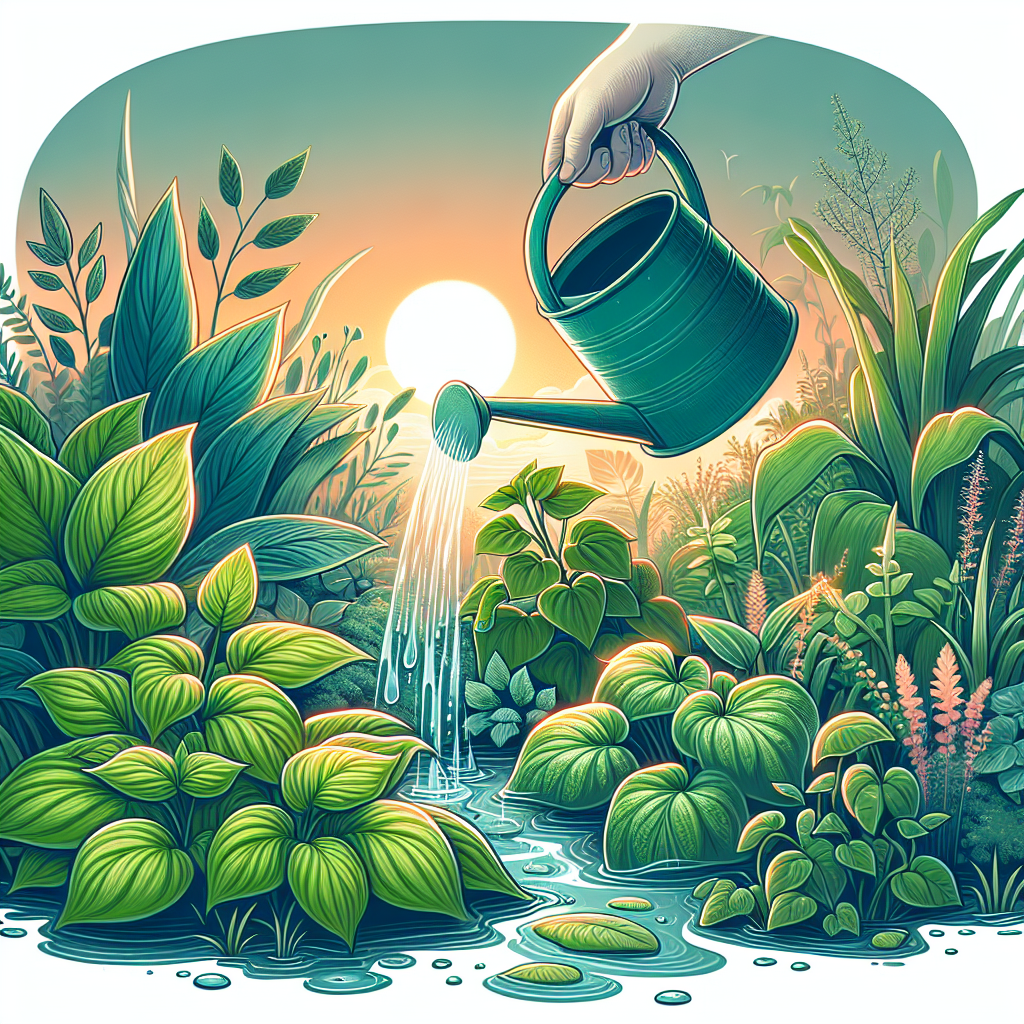Title: How to Reduce Water Stress in Your Plants
As gardeners, we all strive for our green spaces to flourish, yet we often encounter a common foe: water stress. This condition can stem from both under and overwatering, leading to a plethora of issues in our beloved plants. Fortunately, with the right knowledge and tools, this problem can be mitigated or completely avoided. Today we’ll discuss in detail how to identify and reduce water stress, ensuring your plants remain healthy and vibrant.
Understanding Water Stress
Water stress occurs when a plant’s water supply is not adequate to meet its needs. It can result from various factors, including drought, poor soil drainage, and inconsistent watering practices. The United States Department of Agriculture provides valuable resources that explain how environmental conditions can lead to different forms of water stress in plants.
Signs of water stress in plants may include:
- Wilting leaves
- Dry, crispy leaf edges
- Stunted growth
- Leaf drop
- Yellowing leaves
Both dehydration and overhydration can prompt these symptoms, so discerning the cause is the initial step to providing relief to your plants.
Preventing Dehydration
To shield your plants from dehydration, it’s crucial to understand their specific water requirements. A study by the University of Georgia provides insights on the water needs of different plant species which can guide your watering schedule.
Here are strategies to prevent dehydration:
- Consistent Watering Schedule
Maintaining a regular watering schedule helps prevent the soil from drying out. It’s best to water your plants early in the morning or late in the evening when evaporation rates are lower. -
Mulching
Applying a layer of mulch around your plants can significantly conserve soil moisture and regulate soil temperature. Organic mulches like straw or wood chips are excellent options. -
Drip Irrigation Systems
A drip irrigation system provides water directly to the roots of your plants, reducing waste and ensuring they receive adequate hydration. -
Soil And Water Retention
Incorporating organic matter into your soil can aid in water retention. Materials like peat moss or coconut coir can help soils hold water longer. -
Proper Plant Selection
Choosing plants adapted to your local climate can greatly reduce their vulnerability to water stress. Native plants or drought-resistant species are often ideal for water-efficient gardens.
Addressing Overwatering
Overwatering is just as problematic as its counterpart and leads to issues like root rot or fungal growth. Here’s how you can address overwatering:
- Check the Soil Before Watering
Always check the soil’s moisture level before adding more water. A simple finger test—inserting your finger into the soil up to the second knuckle—can help gauge if watering is necessary. -
Good Drainage is Key
Make sure your plants have adequate drainage so that excess water can escape. This can be achieved by using well-draining potting mix and pots with drainage holes. -
Reduce Watering Frequency
Adjust your watering frequency according to the weather and season. Plants typically need less water during cooler or rainy periods. -
Monitor Environmental Conditions
Humidity, temperature, and light all affect your plant’s water needs. Be mindful of these conditions and adjust your watering practices accordingly. -
Rescue Overwatered Plants
If a plant has been overwatered, stop watering immediately and let the soil dry out. For potted plants, you may need to repot them into fresh, dry soil to prevent further root damage.
Innovative Products to Help Manage Water Stress
There are products on the market designed to help with water management in your garden:
- Soil Moisture Meters: Devices like The Aquameter Soil Moisture Sensor can give you a precise reading of soil moisture levels, taking the guesswork out of watering.
- Self-Watering Planters: Consider using self-watering planters that provide a consistent water supply based on your plant’s needs.
Conclusion
Identifying and managing water stress plays a pivotal role in maintaining a healthy and lush garden. With the tips provided, you can better ensure your plants receive the right amount of water. Remember, patience and attentiveness are key; monitor your plants closely and adjust your care routine as needed, and you’ll be rewarded with a thriving garden.
Continue your gardening education by following reputable resources and engaging with gardening communities. Whether you are a novice or an expert, there is always more to learn about the art of nurturing plants. With dedication and the right information, you can look forward to a vibrant, water-stress-free garden.
Happy gardening!


